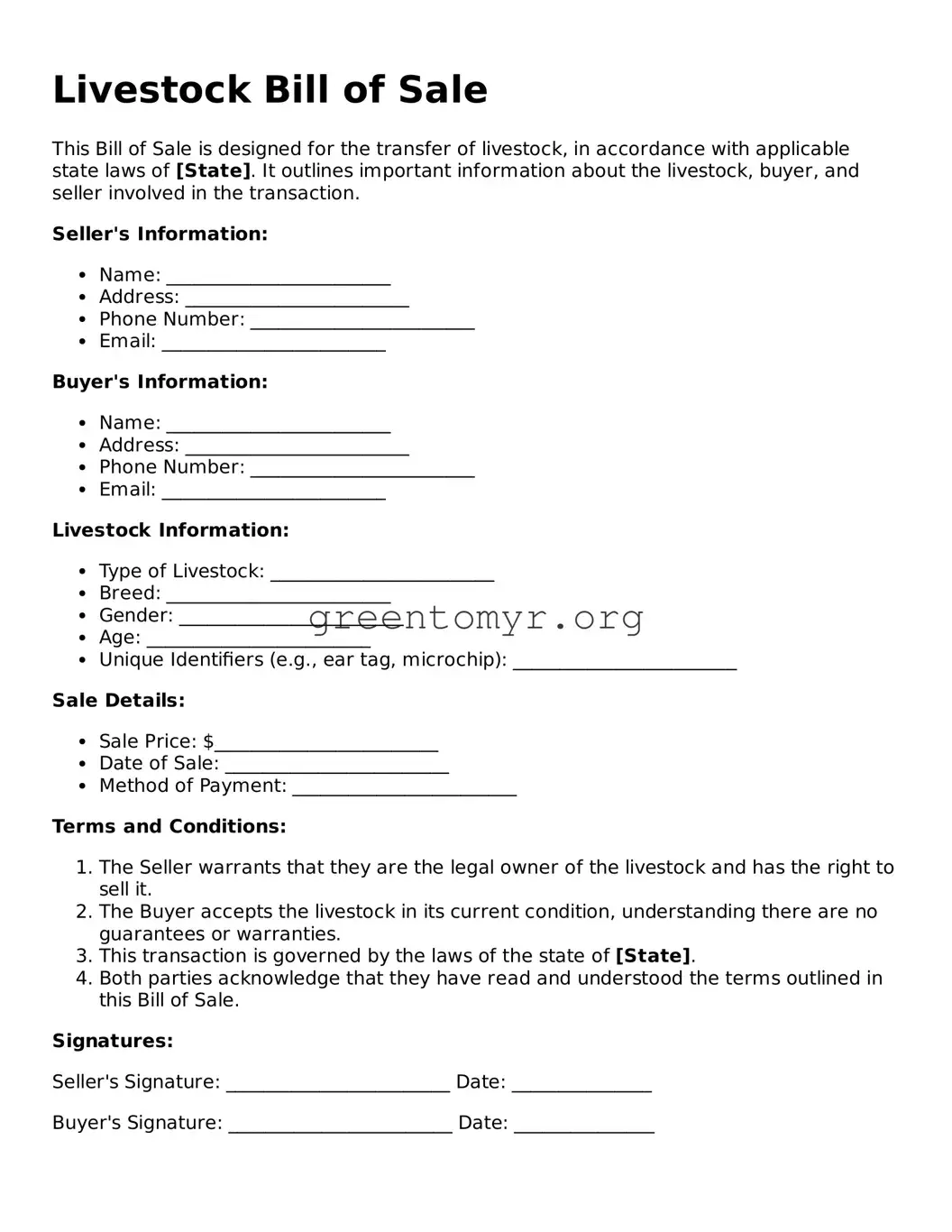A Livestock Bill of Sale form is a legal document that transfers ownership of livestock from one party to another. This form serves as proof of the transaction and includes important details about the livestock being sold, such as species, breed, age, and any identifying marks. It is crucial for both buyers and sellers to ensure that the transfer of ownership is documented to protect their rights.
Why do I need a Livestock Bill of Sale?
Having a Livestock Bill of Sale is essential for several reasons:
-
It provides a clear record of the transaction.
-
It protects both the buyer and the seller in case of disputes regarding ownership or conditions of the sale.
-
It is often required for legal purposes, including tax assessments and insurance claims.
To create a comprehensive Livestock Bill of Sale, the following information should be included:
-
Names and contact information of both the buyer and the seller.
-
A description of the livestock, including species, breed, age, color, and identification numbers if applicable.
-
The sale price and payment method.
-
The date of the sale.
-
Any warranties or guarantees provided by the seller.
Is a Livestock Bill of Sale required by law?
While a Livestock Bill of Sale is not always legally required in every state, it is highly recommended. Some states have specific laws that may require this document for certain livestock sales or for sales involving specific amounts. It is advisable to check local regulations for any requirements that may apply.
Can I use a Livestock Bill of Sale for different types of livestock?
Yes, a Livestock Bill of Sale can be used for various types of livestock, including cattle, sheep, goats, pigs, and horses. However, the form should be tailored to capture specific details pertinent to the type of animal being sold to ensure clarity in the transaction.
What happens if there are disputes after the sale?
In the event of disputes, the Livestock Bill of Sale serves as critical evidence. If a buyer later claims ownership or livestock condition issues arise, this document can provide resolution. It is beneficial to keep copies of all related documents, including health records or contracts, in case disputes occur.
Do I need a lawyer to create a Livestock Bill of Sale?
In most cases, individuals do not need a lawyer to create a Livestock Bill of Sale. Many templates are available online that can be customized. However, if the transaction is substantial or involves complex legal issues, consulting with a lawyer may be prudent to ensure all legal aspects are adequately addressed.
How can I keep my Livestock Bill of Sale secure?
To protect your Livestock Bill of Sale, consider the following tips:
-
Store physical copies in a safe place, such as a locked drawer or file.
-
Keep digital copies in a secure cloud storage solution with strong passwords.
-
Share copies only with relevant parties to prevent unauthorized access.
